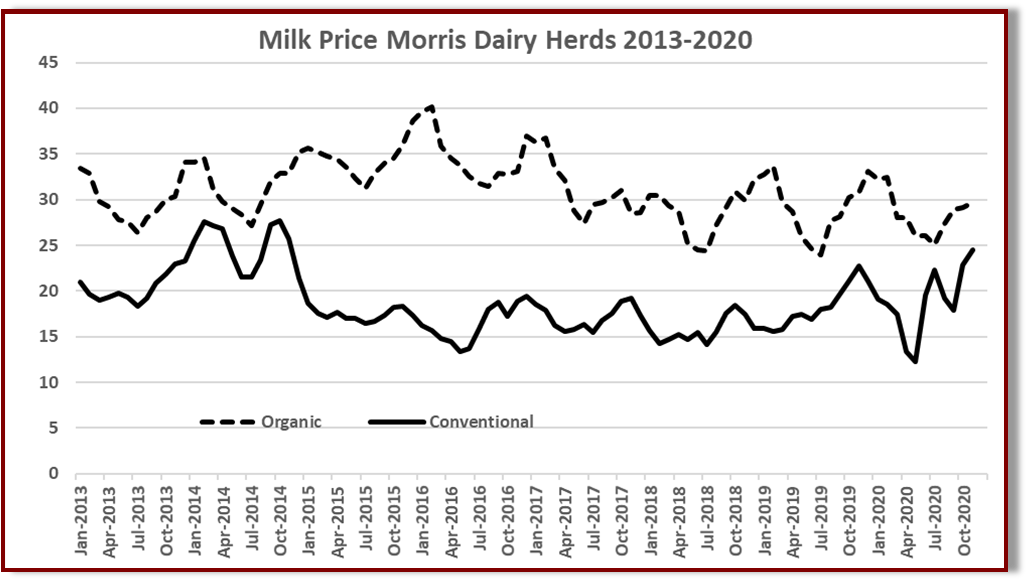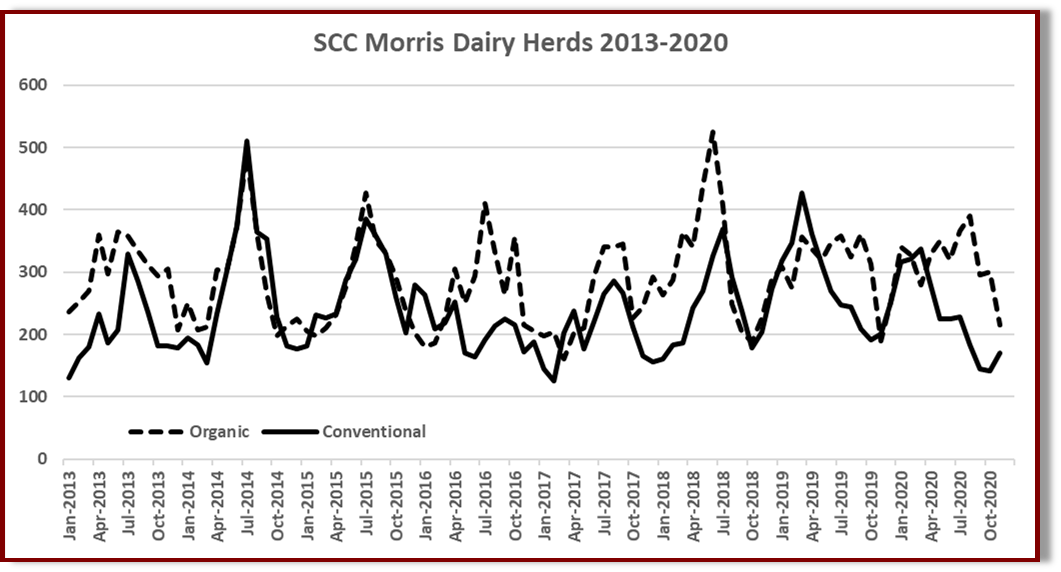By Brad Heins
May 2021
We have been tracking our monthly milk price and somatic cell count for our 2 dairy herds since 2013. They provide some interesting views of the dairy industry within the last 7 years and how our herd is managed and affected by weather. One issue that is consistent across the years is somatic cell count and how to improve milk quality. Therefore, let us discuss the milk price and some milk quality information from the past 7 years at the WCROC, and tell you what we have done to lower the somatic cell counts for both the organic herd and the conventional herd.
In the milk price figure are the final mailbox price, with premiums, that we have received for milk for our 2 herds. Across the years, we average about 4.25% fat and 3.4% protein. Our cow numbers and milk production for both herds fluctuate during the year, because half of cows calve in the spring and half calve in the fall. For the organic herd, there has been a downward trend in milk price since early 2016. That $40 cwt. milk price was really nice that year, and we are around $30 cwt. at the end of 2020. The conventional herd also had the same downward trend from the highs of 2014 and we are about $26 cwt. at the end of 2020. The milk price is volatile during different months of the year, and I am sure we will continue to see the ups and downs into the future.
In the other figure are the bulk tank somatic cell count for both herds from 2013 to 2020. For the organic herd, the somatic cell count has been on a roller coaster ride. Typically, during the spring, the somatic cell count can be high because of cows getting turned out to pasture while facing spring rains and the dreaded “mud”. We have always culled some cows because of high somatic cell count (that’s our #2 reason for culling cows). We have always done extensive culturing of bulk tank samples for both herds. Typically, our biggest issues are Non-Ag Strep and Staph species. These are environmental mastitis caused by the environment of the cow (i.e., bedding, poor milking prep, weather).
We also use the Minnesota Easy Culture System Tri-plate system for on-farm culturing of cows. This really helps us diagnose what is happening with our cows to determine either what we can change with management or how to treat our conventional cows with antibiotics. This has helped us get our somatic cell count and mastitis under control. The lower somatic cell count in the conventional herd comes at greater expense because of the use of antibiotics to treat mastitis. Many dairy producers are skeptical of organic production because of the restrictions imposed on the use of antibiotics. Organic dairies treat mastitis in a variety of ways, including frequent stripping of quarters to utilization of a variety of organic products such as garlic, aloe, or essential oils.
There are some key points for all dairy producers to consider to improve milk quality in their herd. First, identify subclinical infections and culture cows to determine if the cause of the mastitis is either environmental or contagious. Second, milking hygiene is very important. Make sure to use a pre- and post-dip, and wear latex or rubber gloves while milking. Lastly, develop culling guidelines and either cull chronically infected cows or milk them last.


